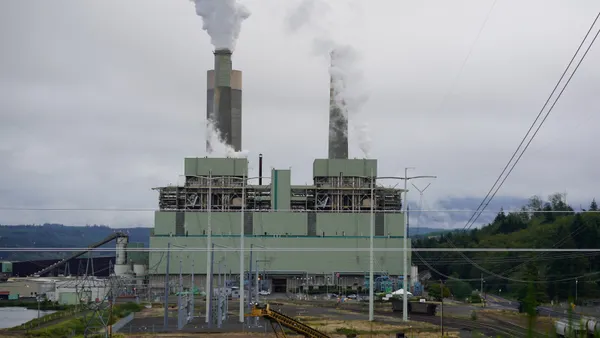Dive Brief:
- The Biden-Harris administration on Tuesday laid out a road map to at least triple U.S. nuclear power generation capacity by 2050 by deploying 200 GW of net new capacity from newly constructed reactors, restarts of reactors idled for economic reasons and power uprates of generating equipment at existing nuclear power plants.
- The detailed plan envisions 35 GW of new nuclear capacity operating or under construction in the U.S. by 2035 as the industry ramps to a sustained deployment pace of 15 GW per year by 2040.
- The plan “showcases the extraordinary amount of support provided to nuclear energy by the Biden administration and bipartisan lawmakers while handing the new administration a road map of what needs to be achieved with the existing tools,” said Pillsbury Winthrop Shaw Pittman Global Energy Industry Leader and partner Elina Teplinsky, who participated in the road map’s stakeholder engagement process.
Dive Insight:
The United States last year was among 25 signatories to the Declaration to Triple Nuclear Energy, an “aspirational goal” to triple global nuclear energy production from 2020 to 2050.
Both the Declaration to Triple Nuclear Energy and the Biden-Harris administration’s road map specifically reference a goal of achieving a net-zero emissions economy by 2050. President-elect Donald Trump’s official campaign policy platform promised to “unleash Energy Production from all sources, including nuclear,” but makes no mention of a 2050 net-zero target.
Though his first administration was broadly supportive of the nuclear industry, Trump has not publicly commented on the new framework.
“The framework is essentially a compendium of ongoing programs and actions based on existing authorities combined with a road map of actions needed to enable the targets [but] does not identify existing gaps or make suggestions for new tools,” Teplinsky said. “This will be left to the incoming administration.”
Critics of the U.S. nuclear industry quickly voiced opposition to the road map.
Environment America Executive Director Lisa Frank said in a statement that the plan risked “toxic meltdowns, wrecked landscapes and contaminated drinking water.” U.S. PIRG Energy and Utilities Program Director Abe Scarr in a separate statement called nuclear energy “dangerous, expensive and a distraction from cheaper, safer options like solar power” and said its expansion would “[waste] time and resources.”
The Biden-Harris road map “builds on existing efforts across the Department of Energy, Nuclear Regulatory Commission, Department of Defense and other agencies by outlining actions that the U.S. government can take, within existing statutory authorities to expand nuclear energy, in collaboration with the private sector and power customers,” the administration said Tuesday.
The road map aims to expand U.S. nuclear capacity through construction of new large “gigawatt-scale” reactors, small modular reactors with individual electric generating capacities between 50 MW and 500 MW, and microreactors that produce 50 MWe apiece or less. It also envisions “extending and expanding existing reactors, through license renewals, power uprates, and restarting recently retired reactors.”
Other road map pillars include licensing and permitting improvements, workforce development, supply chain development for nuclear fuel and reactor components as well as spent fuel management. This year’s landmark Accelerating Deployment of Versatile, Advanced Nuclear for Clean Energy Act authorized new funding and mandated various steps or official actions to streamline NRC licensing processes, establish new domestic supplies of nuclear fuel and expand the U.S. nuclear workforce.
Experts say resuming reactor operations is likely feasible at only a handful of recently-retired U.S. nuclear plants, including the 601-MW Duane Arnold nuclear plant in Iowa. Holtec International’s 800-MW Palisades plant remains on track to restart in Michigan next fall, while Constellation Energy recently announced plans to restart by 2028 the 835-MW first unit at Three Mile Island in Pennsylvania.
The road map says existing nuclear power plant sites offer “a significant potential deployment pathway for new large reactors.” Existing nuclear sites could host up to 60 GW of new large reactor capacity and up to 95 GW of capacity from smaller advanced reactors, DOE said in a September report.
Additionally, retiring coal plant sites reviewed in the report could host as much as 174 GW of additional new reactor capacity, DOE said.














